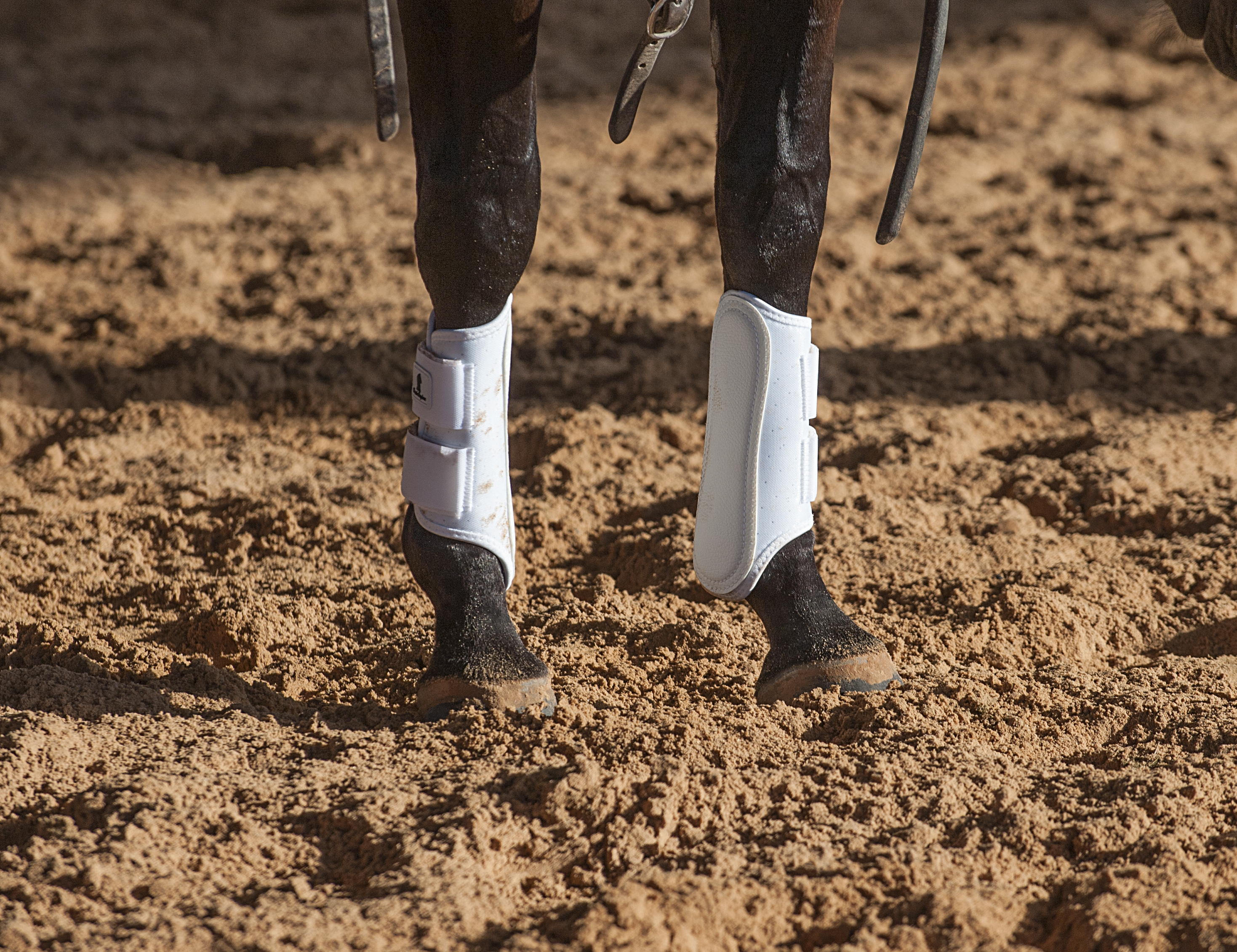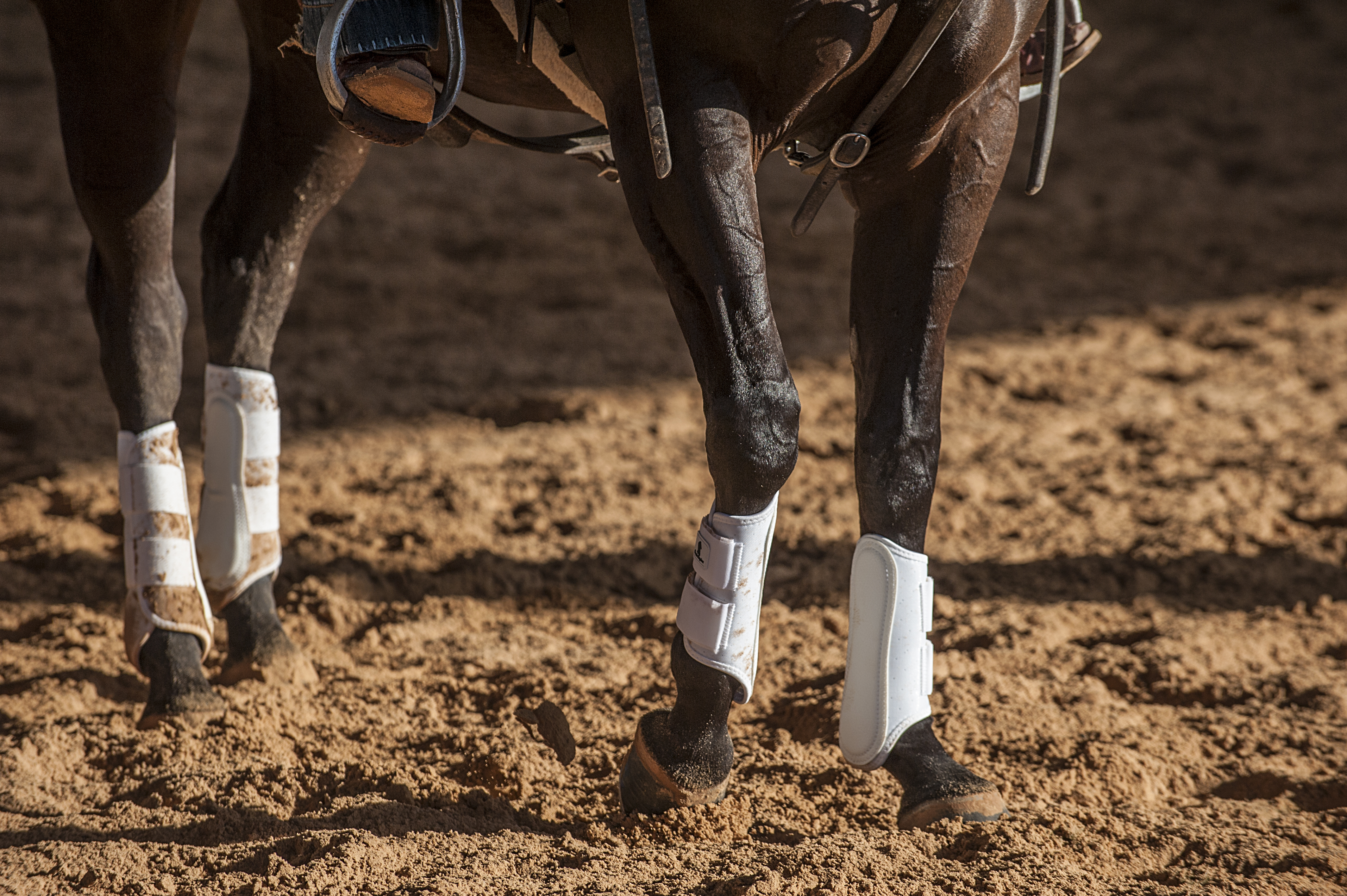“Not again!” you sigh as you pull your horse up and hop off to inspect the damage. Another thorn picked up on the trail, and the poor guy is three-legged.
As a horseperson, you know that equine legs deserve special attention; after all, a lame horse is an unhappy horse—and an unhappy horse makes for a still unhappier would-be rider.
Never fear: Whatever your activity, there’s a boot that can help protect or support those precious limbs.

Protective Boots
Whether you ride your horse in the arena or out on the trail, protective boots are a great way to prevent injury to his splint bones, as well as the vulnerable soft tissues on the backs of his legs. Boots for tougher terrain are generally made from a non-stretch material that sheds thorns and brush and is sturdy enough to withstand piercing from sharp objects (such as rocks, sharp sticks or those pesky thorns). However, if you only ride your horse on more manicured surfaces, your horse’s protective boots can have a bit more stretch.
There are different levels of protection to suit specific tasks, whether you’re starting colts, riding the trails, working cows or reining. For example, if you and your horse compete in classes like reining or working cow horse, you’ll need a boot that offers protection but does not interfere with the judge’s ability to evaluate your horse’s legwork. Shape is critical in speed events, too—when going for time, the more streamlined, the better!
Lastly, when shopping for protective boots, keep in mind that the same tough fabric that protects your horse’s legs can also cause a buildup of both heat and moisture against his skin. This can lead to irritation, so seek styles made from breathable materials or with features designed to facilitate airflow.

Supportive Boots
We’ve all had a joint, tendon or ligament that needed support—perhaps due to an old injury or the need for stabilization during athletic activity. It’s no different with horses, but wraps like you might have used on your own legs have their limits in equine activities.
Supportive boots are a far better option for horses involved in fast, strenuous activities, particularly those that require repetitive maneuvers. Unlike bandage wraps, they won’t unwrap at the wrong moment and are less likely to cause binding injuries—like a bandage bow. Look for wraparound designs that support all the ligaments, with just enough elastic “give” to hug the leg firmly.
Other Tips
When selecting any type of equine boot, size matters! Be sure to follow manufacturer’s guidelines. When fitting them, you should be able to slide one finger between the horse’s leg and the boot. The boots should also be long enough to cover the cannon bone and the inside of the fetlock without hindering movement.
Boots that are too big fail to provide the needed support, can trip a horse and can even allow footing material to get inside and irritate the leg. At the other extreme, boots that are too small not only constrict movement, but can rub, cause pain and even damage tendons.
Lastly, consider using bell boots on your horse in addition to his protective or supportive boots. A stepped-on heel can be very painful, but bell boots can help prevent this, as well as abrasion from the ground or arena footing. Because they are affordable and come in a variety of styles and colors, with many closure options, bell boots are a no-brainer. A little extra insurance never hurts!
Bottom line: When taking care of your horse, start from the ground up—with his legs.
This article is sponsored by: Classic Equine.






